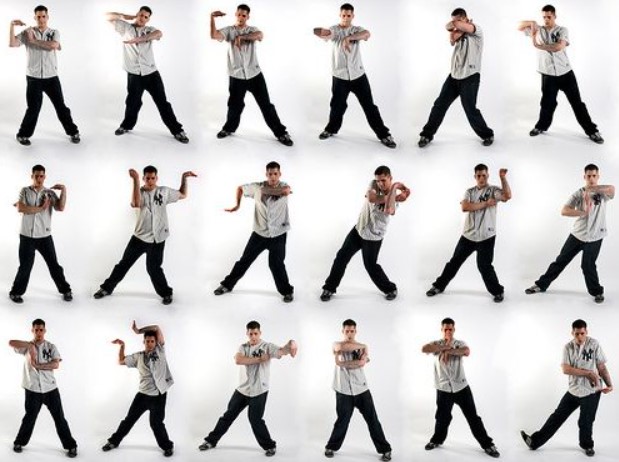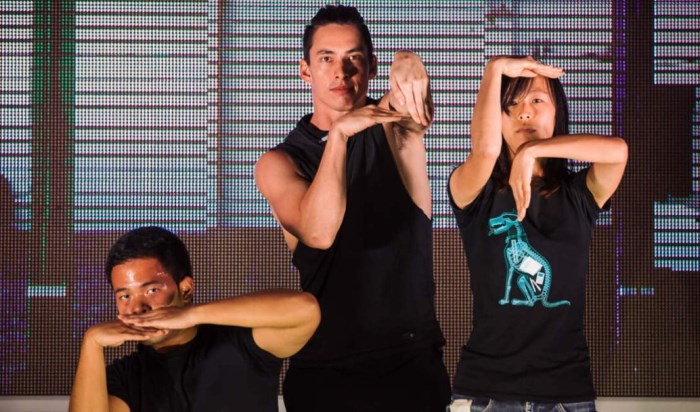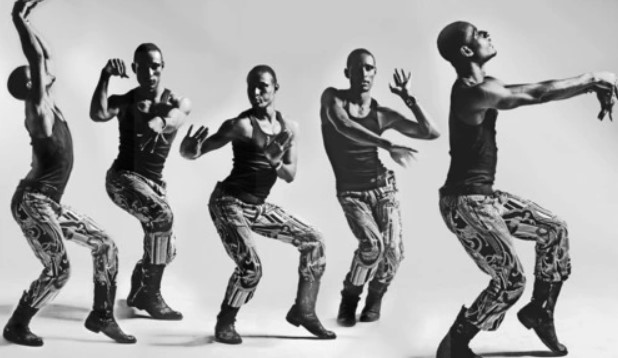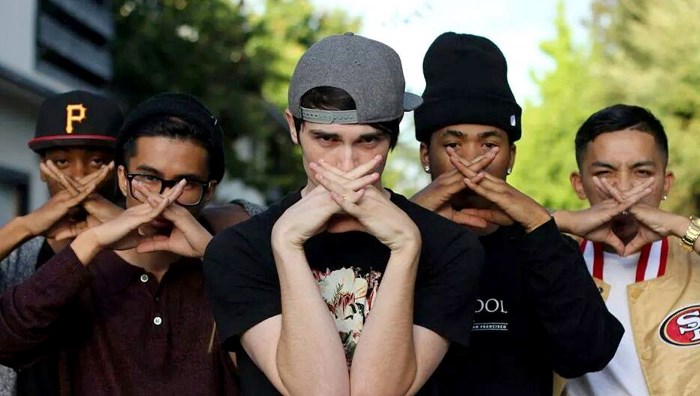People’s creativity tends to be sparked when it comes to Ancient Egypt. From tall monuments and mystical mummies to thousand-year-old secrets, the bygone civilization still has a magic that draws us to it.
The tutting dance is a beautiful celebration of Egyptian history and culture. This mesmerizing dance style involves angling and shaping your body, moving your hands and fingers in intricate movements that mimic the geometrical patterns of the Egyptian pharaohs.
While on the surface, it may seem like it’s a modern invention (it only became popular in the 70s and 80s,) the roots of the dance can actually be traced back to Ancient Egypt.
In today’s article, we’ll tell you where the tutting dance originated from, and the people behind it!
Table of Contents
Tutting Dance Definition: What Is Tutting Dance?
Before we get to the origins of Tutting dance, for those unfamiliar with it, let’s talk about what it is first.
The word “tutting” is believed to have come from the name of an Egyptian pharaoh, Tutankhamen (or King Tut.)
In the tutting dance, the dancers create intricate shapes with their arms and hands. Usually, these shapes resemble those found in ancient Egyptian hieroglyphics. The motions can include bending and extending the fingers, the wrists, and the arms in precise angles and positions, like a 90° angle.
That’s not all, though. Tutting dancers often incorporate other dance styles, such as popping and locking, into their routines.
The dance is usually performed to music with a slow tempo to give the dancer plenty of time to emphasize the shape of their body and the smoothness of their movements to the audience. The sharp angles of the moves also highlight the flexibility of the dancer’s body.
As a result, even though it may look easy, the dance actually requires a lot of skill and practice to pull off prettily and safely!
A small disclaimer, though: despite looking like a folk dance, tutting is a street dance commonly associated with hip-hop. Its roots (which we’ll talk about later) indeed came from Ancient Egypt, but don’t mistake it for an ancient Egyptian dance!
Tutting vs Voguing
Tutting and voguing may look similar on the surface, but they’re two completely different dance styles!
The characteristic of the tutting dance is that it highlights the ability of the dancer to execute technically-tricky, sharp movements with their body. It’s also done in a controlled way, with each move being carefully choreographed beforehand.
Meanwhile, voguing focuses more on the drama element of the dance. Unlike the rigid geometry of tutting, voguing dancers have to make graceful, smooth movements on the dance floor. Voguing also gives the dancers a lot more leeway when it comes to improvisation compared to tutting.
And last but not least, there’s the difference in the venue, too. Tutting is mostly a hip-hop-style street dance. On the other hand, voguing is more of a ballroom dance. It was really in vogue (get it?) during the 1980s in the ballroom scene in NYC.
Check more: Where Did The Fandango Dance Originate
Tutting Dance Origin & History
Although tutting itself is a modern creation, the roots of this dance can be traced back to ancient Egyptian civilization.
The pharaohs of Egypt were known for their elaborate hand gestures and postures, which were depicted in hieroglyphics (wall writings) and other forms of art. These gestures and postures were used to communicate ideas, words, and concepts – almost like sign language!
But tutting didn’t come from ancient Egypt. Rather, it only took inspiration from it.
Tutting first appeared in the street dancing scene in the mid-170s and early 1980s. Although to whom the title of the “inventor” of tutting belongs is still heavily debated today, most sources agree that the earliest (or one of the earliest) person to perform the tut is Mark Benson (King Boogaloo Tut.)
Benson was only 15 years old when he saw Boogaloo Sam, the founder of the Electric Boogaloos, dancing in MacArthur Park in Long Beach, California. He was inspired to join the Electric Boogaloos and stand out by creating a unique style.
According to Benson, the inspiration for the tutting dance came to him after watching an episode of Batman featuring the villain King Tut. He was charmed by the poses and gestures that the villain would do and realized quickly that it could turn into a pretty nice popping dance.
Benson started experimenting and choreographing … eventually leading to the tutting dance that we all know and loved today.
In 1979, Benson choreographed The Street Scape, which became a hit and propelled him to international fame. He’s now made several appearances on popular TV shows that buoyed his reputation even further: So You Think You Can Dance, America’s Best Dance Crew, America’s Got Talent … you name it!
But over time, the tutting dance further evolved and became more complex than what Benson set out with.
People started to incorporate elements of other dance styles and today, on social media platforms such as YouTube and TikTok, you can see dancers blending tutting into their choreographies all the time.
Tutting Dance Steps

The Basic Tutting Dance
There are a lot of tutting dance moves, but if you want to get started, there’s one basic move that you can practice right now at home.
- Start by sweeping your hands up and holding them in front of your chest, with your palms together and fingers pointing upward.
- Slide your right hand up. Do it in such a way that the bottom of your right palm rests against the tips of your left fingers.
- Curve your right hand down until your palm covers the back of your left hand.
- Slide your right hand across your left forearm, forming a square, box-like shape.
- Lower your arms, so that one arm is lying on top of the other, still in the box shape.
- Slide your arms out, so that the fingers of each hand are touching.
- Finally, bring your palms back together, in the same position as in step 1.
The Transition
Got the basics down? Great!
However, before you can move on to learn trickier tutting moves, you’ll have to learn the transition. The transition will allow you to smoothly change from one move to another in your choreography.
Mastering the art of subtle transitions is key to creating a mesmerizing dance performance. Your transitions should flow seamlessly from one move or trick to another, without being obvious to the audience. When executed perfectly, your performance will appear smooth and effortless!
To seamlessly transition from waving to tutting, raise your arms into tutting form during your waving motion.
Similarly, if you are botting (popping), transitioning from a walking arm movement to tutting will look really smooth.
There are really no hard instructions on what your transition can be at all. Rather, it all boils down to your creativity and your personal dancing style.
Famous Tutting Dancers
Wondering just how good tutting looks like when done by a professional? Check out the recordings from these top-notch tutting dancers.
Finger Circus
The Finger Circus is a contemporary dance team based out of San Francisco. As their name suggests, their performances mostly revolve around “finger tutting.” This is a kind of tutting dance that focuses primarily on the flexibility and fluid movements of the fingers and the hands.
They’ve performed in many corporate ads, including one for McDonald’s. You can also see them on MVs like Taylor Swift’s “Shake It off”.
The Finger Circus has five members: Christopher Chase Lindsey (CTut), Bela Joseph Sao (Strobe), Jordan Kaysean Demings (Era), Reymar Anonuevo Silverio (Nemesis), and John Ray Hunt (P-nut).
Julian “JayFunk” Daniels
JayFunk is one of the biggest names in the tutting world today. This self-choreographed performance “I’m Home” has received well over 100,000 views on YouTube. The video showcases JayFunk’s talent spectacularly.
But his performance didn’t just attract the attention of viewers and enthusiasts everywhere. It also landed him a gig as a “magic choreographer” for Marvel Studios, where he helped choreograph the magic-casting scenes of Dr. Strange (Benedict Cumberbatch.)
Yes, Dr. Strange was actually tutting all along every time he casts a spell!
Jay Gutierrez (Jsmooth)
One of the earliest tutting dancers on the Internet was Jay Guttierez (or Jsmooth). He first uploaded a video of himself practicing a finger tutting routine in his bedroom in 2009, attracting over 50,000 views. It was an impressive display of his technical dance skill.
As of 2021, he’s become a professional dancer as well as a renowned dance instructor in the hip-hop world, giving masterclasses all across the US and many countries around the world. He’s been to India, Hong Kong, Taiwan, France, etc. and all of his classes were well-received.
Final Words
The tutting dance is an odd, but incredibly good-looking mix between ancient dances and modern hip-hop. Through its unique combination of angles, shapes, and illusions, tutting has become one of the most popular and recognizable street dance styles in the world.
If you’re interested in giving tutting a shot, fortunately, it’s entirely possible to learn the basic moves at home. But if you want to fine-tune your moves and get good enough to show at a competition, you may need to join a club, a studio, or find an instructor.
What’s your favorite aspect of this dance? Do you plan on practicing or grafting it into your personal routine?
Tell us in the comments!


